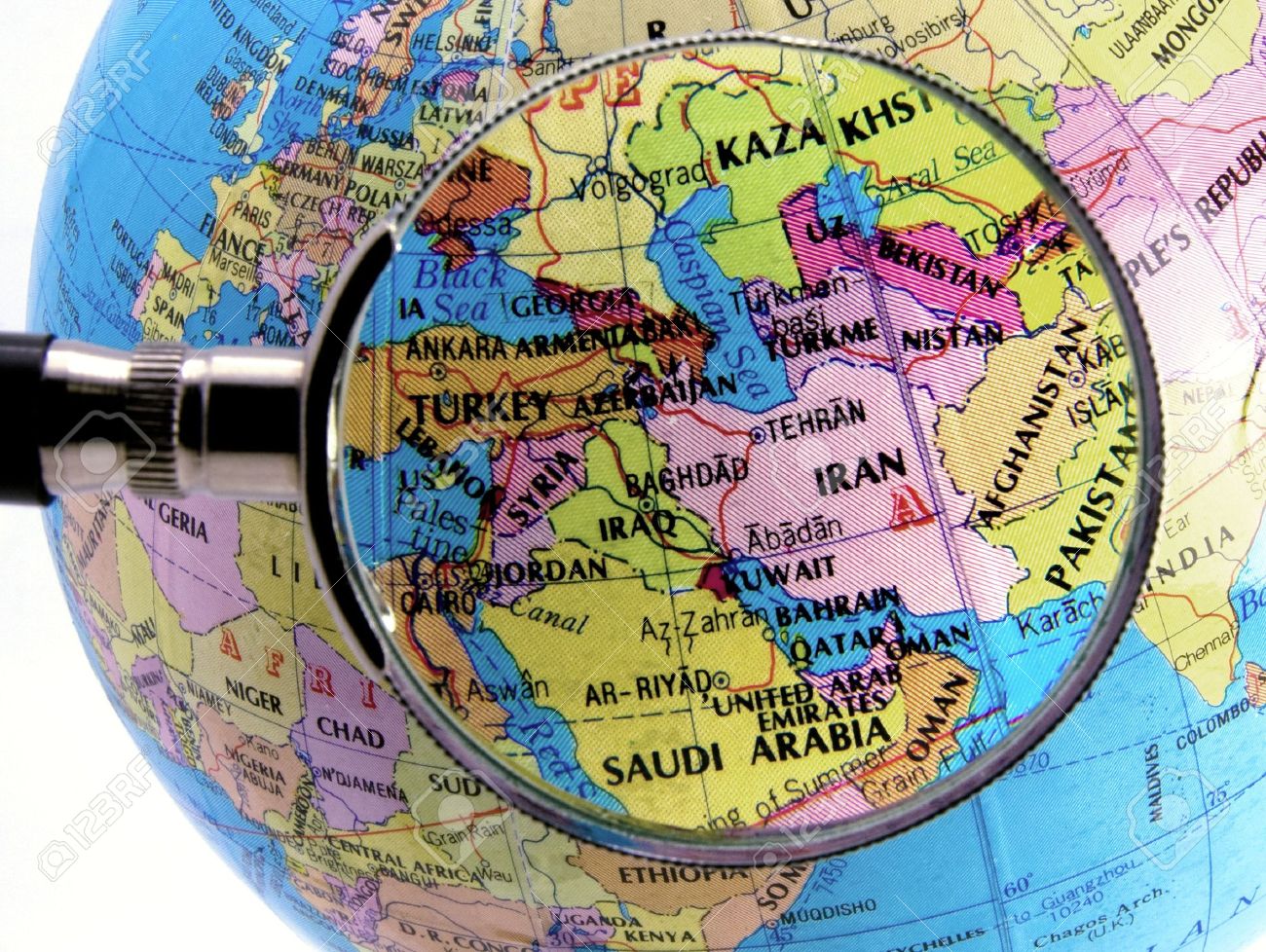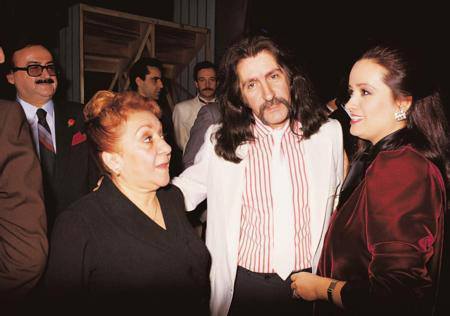Arabic people incited 1948 Arabic – Israel war. If we look at 1956 Arabic – Israel war, we can see that this war happened because of England, France and Israel’s attacks to Egypt. However, 1967 Arabic – Israel war happened because of not Israel; Arabs.
Arabs wanted 1967 war to be happened, because;
1)Nasır wanted to take revenge of 1948 and 1956 wars. This was a prestige problem for Nasır. He wanted to dominate Middle East.
2) Since 1956, Soviet Russia started to give weapons to Egypt and Syria. I mean, also Soviets incited 1967 war.
3)USA was unsuccessful in Vietnam, so they thought that USA wouldn’t support Israel.
1967 Arabic – Israel war is also called “Six Days War”, because the war continued in six days. The tension between Israel and Syria which was in 1966, made 1967 war’s starting buildups.
In 1964 the Syrian chief of Staff Salah Jadid said that, “Every soldier in our army feels that Israel must be wiped off of the map.” The nascent al Fatah, along with Syria, bragged in 1967 that “We will carry on operations until Israel has been eliminated.” Indeed, Radio Damascus was quite explicit about its intentions well before it lost the Golan Heights: “Our known objective is the freeing of Palestine and the liquidation of the Zionist existence there” First Palestine Congress which was congregated in May 1964 also affected this situation, because Palestine Liberation Community was settled down in the congress. According to this congress, “the Jews who were living in Palestine will be Palestine citizens before 1917 Balfour Declaration.”
After the First World War, many new countries occurred in the Middle East. There were two aims:
1)Arab Unity
2)Anti-Imperialism
After those, anti-Zionism was occurred. The vanguards of Arab Nationalism were Nasseism, Boathism, Pan- Arab, the Arab Boath Socialist Party…
If we look at some important dates in the Middle East’s history, we can understand the Middle East problem more:
1956: Revolution was happened in Iraq. In Iraq, a new national movement was occurred.
1963: Boath starts to play an important role.
1948: After 1948 war, security situation for Israel was happened.
1965: Yaser Arafat became the head of the Palestinian Liberal Organization (PLO).
In Israel, everybody has a capability to fight. They can easily organize. Israel’s neighbours are full of Arabs, so Israel uses technological superity to provide balance. Their air force is very good. Israel Military Doctrine is very powerful. They don’t want their fighters to die, because they are important, they have also another jobs to do for Israel. I mean, they are not just soldiers.
1967 war is a milestone. Between the years 1945-1967, Arab Nationalism accrued as I said before. Soviets support Arabs’ euphoria. USA and Soviets make the Cold War continue in the Middle East. In the Middle East, Americans and Russians make a technological race. I mean about weapons…
Syria (especially Nationalist Regime) and Palestine came together in 1964 (PLO). In 1959, Yaser Arafat established Palestine National Liberation Movement and this is one of the biggest reasons which changed the Middle East’s destiny. This movement was against West Bank. Syria made this situation faster, because they would be able to strike Israel easily.
There was also a nationalism problem between Egypt and Syria. Elate was an important area about Israel’s trade. Firstly, Israel destroyed Egypt air force. In 1967 war, Israel occupied Palestine’s lands. Egypt, Syria and Jordan lost some soil in 1967 war.
There were two aspects which were accepted by USA and Soviet Russia:
1-The acquisition of territory by force is unaccepted. The call for withdrawal of Israel from the occupied territories.
2-All countries in the Middle East to live in recognized and secure borders.
After 1967 war, in the draft they use a definition of “occupied soils”… However, in the English draft, they just used “withdrawing from borders”. “Land for peace” was born from UN Security Council 242. It means “Give soil, take peace”.
This affected 1993 Oslo Peace. This peace was based on land and peace. Between the years 1967-1973 are called “no war, no peace period”. There wasn’t a war, but also there wasn’t a peace between the years 1967-1973. Between the years, some important buildups were happened.
For example, there is the emergence of the Palestinian resistance. Palestinian people started to use their own forces by their leader Yaser Arafat, because nobody was successful. El-Fatih association members started to attack the soil where is in the Israel borders.
In 1970, conflicts started to happen between Jordan and Palestine. This made the center shifted to Lebanon. We can see that always an interior war happens where the Palestinians are sent to.
In the 1980s, we see that Lebanon became the Middle East’s Palestinian center. That’s a proof that 1967 war changed the Middle East’s destiny.
Twenty facts about Israel and the Middle East
The world’s attention has been focused on the Middle East. We are confronted daily with scenes of carnage and destruction. Can we understand such violence? Yes, but only if we come to the situation with a solid grounding in the facts of the matter — facts that too often are forgotten, if ever they were learned. Below are twenty facts that we think are useful in understanding the current situation, how we arrived here, and how we might eventually arrive at a solution.
Roots of the Conflict
1- When the United Nations proposed the establishment of two states in the region — one Jewish, one Arab — the Jews accepted the proposal and declared their independence in 1948. The Jewish state constituted only 1/6 of one percent of what was known as “the Arab world.” The Arab states, however, rejected the UN plan and since then have waged war against Israel repeatedly, both all-out wars and wars of terrorism and attrition. In 1948, five Arab armies invaded Israel in an effort to eradicate it. Jamal Husseini of the Arab Higher Committee spoke for many in vowing to soak “the soil of our beloved country with the last drop of our blood.”
2- The Palestine Liberation Organization (PLO) was founded in 1964 — three years before Israel controlled the West Bank and Gaza. The PLO’s declared purpose was to eliminate the State of Israel by means of armed struggle. To this day, the website of Yasser Arafat’s Palestinian Authority (PA) claims that the entirety of Israel is “occupied” territory. It is impossible to square this with the PLO and PA assertions to Western audiences that the root of the conflict is Israel’s occupation of the West Bank and Gaza.
3- The West Bank and Gaza (controlled by Jordan and Egypt from 1948 to 1967) came under Israeli control during the Six Day War of 1967 that started when Egypt closed the Straits of Tirana and Arab armies amassed on Israel’s borders to invade and liquidate the state. It is important to note that during their 19-year rule, neither Jordan nor Egypt had made any effort to establish a Palestinian state on those lands. Just before the Arab nations launched their war of aggression against the State of Israel in 1967, Syrian Defense Minister (later President) Hafez Assad stated, “Our forces are now entirely ready… to initiate the act of liberation itself, and to explode the Zionist presence in the Arab homeland… the time has come to enter into a battle of annihilation.” On the brink of the1967 war, Egyptian President Gamal Nassar declared, “Our basic objective will be the destruction of Israel.”
4- Because of their animus against Jews, many leaders of the Palestinian cause have long supported their enemies. The Grand Mufti of Jerusalem allied himself with Adolf Hitler during WWII. Yasser Arafat, chairman of the PLO and president of the PA, has repeatedly targeted and killed Americans. In 1973, Arafat ordered the execution of Cleo Noel, the American ambassador to the Sudan. Arafat was very closely aligned with the Soviet Union and other enemies of the United States throughout the Cold War. In 1991, during the Gulf War, Arafat aligned himself with Saddam Hussein, whom he praised as “the defender of the Arab nation, of Muslims, and of free men everywhere.”
5- Israel has, in fact, returned most of the land that it captured during the 1967 war and right after that war offered to return all of it in exchange for peace and normal relations; the offer was rejected. As a result of the 1978 Camp David accords — in which Egypt recognized the right of Israel to exist and normal relations were established between the two countries — Israel returned the Sinai desert, a territory three times the size of Israel and 91 percent of the territory Israel took control of in the 1967 war.
6- In 2000, as part of negotiations for a comprehensive and durable peace, Israel offered to turn over all but the smallest portion of the remaining territories to Yasser Arafat. But Israel was rebuffed when Arafat walked out of Camp David and launched the current Intifada.
7- Yasser Arafat has never been less than clear about his goals — at least not in Arabic. On the very day that he signed the Oslo accords in 1993 — in which he promised to renounce terrorism and recognize Israel, he addressed the Palestinian people on Jordanian television and declared that he had taken the first step “in the 1974 plan.” This was a thinly veiled reference to the “phased plan,” according to which any territorial gain was acceptable as a means toward the ultimate goal of Israel’s destruction.
8- The recently deceased Faisal al-Husseini, a leading Palestinian spokesman, made the same point in 2001 when he declared that the West Bank and Gaza represented only “22 percent of Palestine” and that the Oslo process was a “Trojan Horse.” He explained, “When we are asking all the Palestinian forces and factions to look at the Oslo Agreement and at other agreements as ‘temporary’ procedures, or phased goals, this means that we are ambushing the Israelis and cheating them.” The goal, he continued, was “the liberation of Palestine from the river to the sea,” i.e., the Jordan River to the Mediterranean Sea — all of Israel.
9- To this day, the Fattah wing of the PLO (the “moderate” wing that was founded and is controlled by Arafat himself) has as its official emblem the entire state of Israel covered by two rifles and a hand grenade — another fact that belies the claim that Arafat desires nothing more than the West Bank and Gaza.
10- While criticism of Israel is not necessarily the same as “anti-Semitism,” it must be remembered that the Middle East press is, in fact, rife with anti-Semitism. More than fifteen years ago the eminent scholar Bernard Lewis could point out that “The demonization of Jews [in Arabic literature] goes further than it had ever done in Western literature, with the exception of Germany during the period of Nazi rule.” Since then, and through all the years of the “peace process,” things have become much worse. Depictions of Jews in Arab and Muslim media are akin to those of Nazi Germany, and medieval blood libels — including claims that Jews use Christian and Muslim blood in preparing their holiday foods have become prominent and routine. One example is a sermon broadcast on PA television where Sheik Ahmad Halabaya stated, “They [the Jews] must be butchered and killed, as Allah the Almighty said: ‘fight them: Allah will torture them at your hands.’ Have no mercy on the Jews, no matter where they are, in any country. Fight them, wherever you are. Wherever you meet them, kill them.”
12- There are 21 Arab countries in the Middle East and only one Jewish state: Israel, which is also the only democracy in the region.
13- Israel claims that she is the only country in the region that permits citizens of all faiths to worship freely and openly. Twenty percent of Israeli citizens are not Jewish. On the other hand, Arabs claim that if Israel leaves Palestine’s old soils, there will be a peace in the Middle East.
14- While Jews are not permitted to live in many Arab countries, Arabs are granted full citizenship and have the right to vote in Israel. Arabs are also free to become members of the Israeli parliament (the Knesset). In fact, several Arabs have been democratically elected to the Knesset and have been serving there for years. Israel claims that Arabs living in Israel have more rights and are freer than most Arabs living in Arab countries.
15- Israel is smaller than the state of New Hampshire and is surrounded by nations hostile to her existence. Some peace proposals including the recent Saudi proposal demand withdrawal from the entire West Bank, which would leave Israel 9 miles wide at its most vulnerable point.
16- The oft-cited UN Resolution 242 (passed in the wake of the 1967 war) does not, in fact, require a complete withdrawal from the West Bank. As legal scholar Eugene Rostow put it, “Resolution 242, which as undersecretary of state for political affairs between 1966 and 1969 I helped produce, calls on the parties to make peace and allows Israel to administer the territories it occupied in 1967 until ‘a just and lasting peace in the Middle East’ is achieved. When such a peace is made, Israel is required to withdraw its armed forces ‘from territories’ it occupied during the Six-Day War — not from ‘the’ territories nor from ‘all’ the territories, but from some of the territories.”
17- People from Israel say: “Israel has, of course, conceded that the Palestinians have legitimate claims to the disputed territories and is willing to engage in negotiations on the matter. Israeli Prime Minister Ehud Barak offered almost all of the territories to Arafat at Camp David in 2000.”
18- Despite claims that the Israeli settlements in the West Bank are the obstacle to peace, Jews lived there for centuries before being massacred or driven out by invading Arab armies in 1948-49.
19- The area of the West Bank includes some of the most important sites in Jewish history, among them Hebron, Bethlehem, and Jericho. East Jerusalem, often cited as an “Arab city” or “occupied territory,” is the site of Judaism’s holiest monument. While under Arab rule (1948-67), this area was entirely closed to Jews. People from Israel say: “Since Israel took control, it has been open to people of all faiths.”
20- On the eve of the 1967 war the Arab world had spent $1 billion on defense — more than doubles the Israeli investment. Indeed, Israel’s armed forces were dwarfed by those of its neighbors, which had twice the number of tanks and three times as many jets. Before the Six Day War, the combined Arab armies fielded 900 combat aircraft, 5,000 tanks, and 500,000 soldiers — the latter for the most part outfitted with the latest Soviet and American arms.
To sum up, the 1967 war affected the Middle East’s destiny, very much. The war’s effects still can be felt in the Middle East today. There is not a solution, yet.
TURGAY SUAT TARCAN
04-05 August 2005
SOURCES:
http://www.israelinsider.com/views/articles/views_0401.htm (04.08.2005, 17:24:46)
CENGİZ ÇANDAR’s Notes
ARMAOĞLU, Prof. Dr. Fahir, 20. Yüzyıl Siyasi Tarihi, pg. 701-710
http://www.contenderministries.org/articles/peaceplan.php (04.08.2005, 17:21:29)







